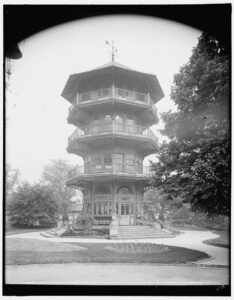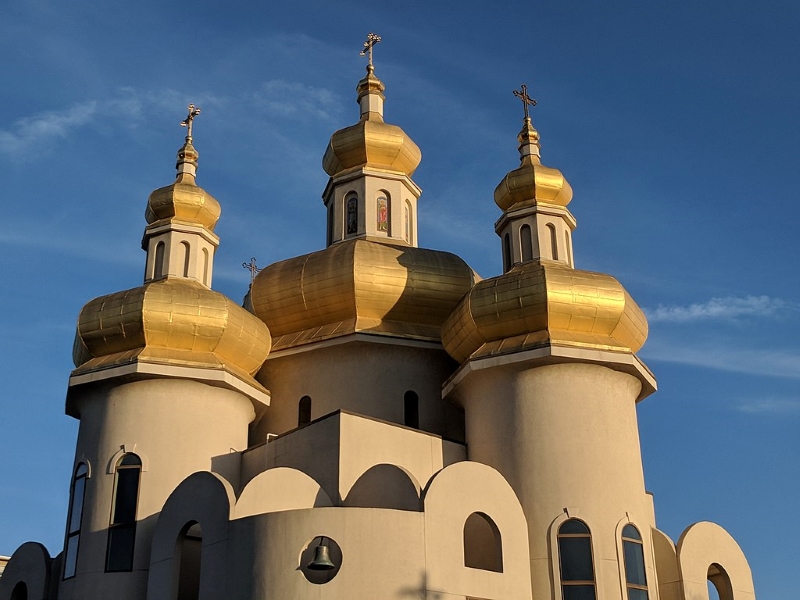As all eyes turn to Ukraine and the potential for the largest ground war in Europe since the end of World War II, it’s a moment to remember the tremendous contributions the Ukrainian people have made right here in Maryland.
Like many immigrants of Eastern Europe, Ukrainian immigration to the United States and, by extension, Maryland, began in earnest in the late 1880s. In Maryland, Ukrainians settled across the state, but the vast majority ended up in the City of Baltimore where industrial jobs were then plentiful and where many found work in the steel and glass industries. Most Baltimore Ukrainians flocked to East and Southeast Baltimore, putting down roots in neighborhoods from Highlandtown to Fells Point.

A street full of Baltimore immigrants lined up and ready to start for the country to the berry farms. Library of Congress.
Stores, religious institutions and cultural activities which reflected Ukrainian interests all expanded in Baltimore by the 1890s, including the founding of St. Michael the Archangel Ukrainian Catholic Church in 1893. The original building was located at 522 South Wolf St., and only later in the 20th century moved to its location on Eastern Avenue, where the current church sits and is designed after a Ukrainian Church located in Kyiv. Other Baltimore Ukrainians, who more formally identified as Ruys-Americans, helped to establish their own congregations, including Saints Peter & Paul Ukrainian Catholic Church.
Along with religious institutions, cultural centers flourished during the first and second generations of Ukrainian immigration, leading to the establishment of the Ukrainian American Citizen’s Club and Ukrainian National Home which operated until the late 1970s.

Patterson Park Pagoda. Library of Congress
Following World War II, a new wave of Ukrainian immigration arrived in Baltimore — including many Jewish Ukrainians seeking to escape Soviet oppression. Those Ukrainians regularly gathered in Patterson Park on American Thanksgiving Day to make a toast to their new lives in America and to play a game of American football. Today, many of these Ukrainians have settled in nearby Pikesville, where they make up nearly 4.5% of the population of that community.
These Ukrainian stories and memories, which fade as each subsequent generation passes, are recorded and remembered at Baltimore’s volunteer driven National Slavic Museum, located in historic Fell’s Point.
In addition to the broad contributions of Ukrainians as a community, many individual Ukrainian-Americans who called Baltimore home have left an indelible mark.
Jacob Glushakow, a renowned Baltimore-based Jewish Ukrainian painter who depicted his adopted city in paint for nearly 60 years.
Philip H. Goodman, the 42nd Mayor of Baltimore, who was born in shtetl of Kolk in what is now the Ukraine.
Yvonne Dornic, the female entrepreneur behind one of the city’s most celebrated Eastern European restaurants, Ze Mean Bean, Dornic dedicated the slavic restaurant to the homeland of her parents.
Joseph Myerhoff, who arrived in Baltimore from Ukraine in 1906 and went on to become one of the city’s wealthiest citizens — leaving a legacy of philanthropy across the community which bear his name to this day.
Subscribe to Preservation Maryland’s Email Newsletter for More Stories

